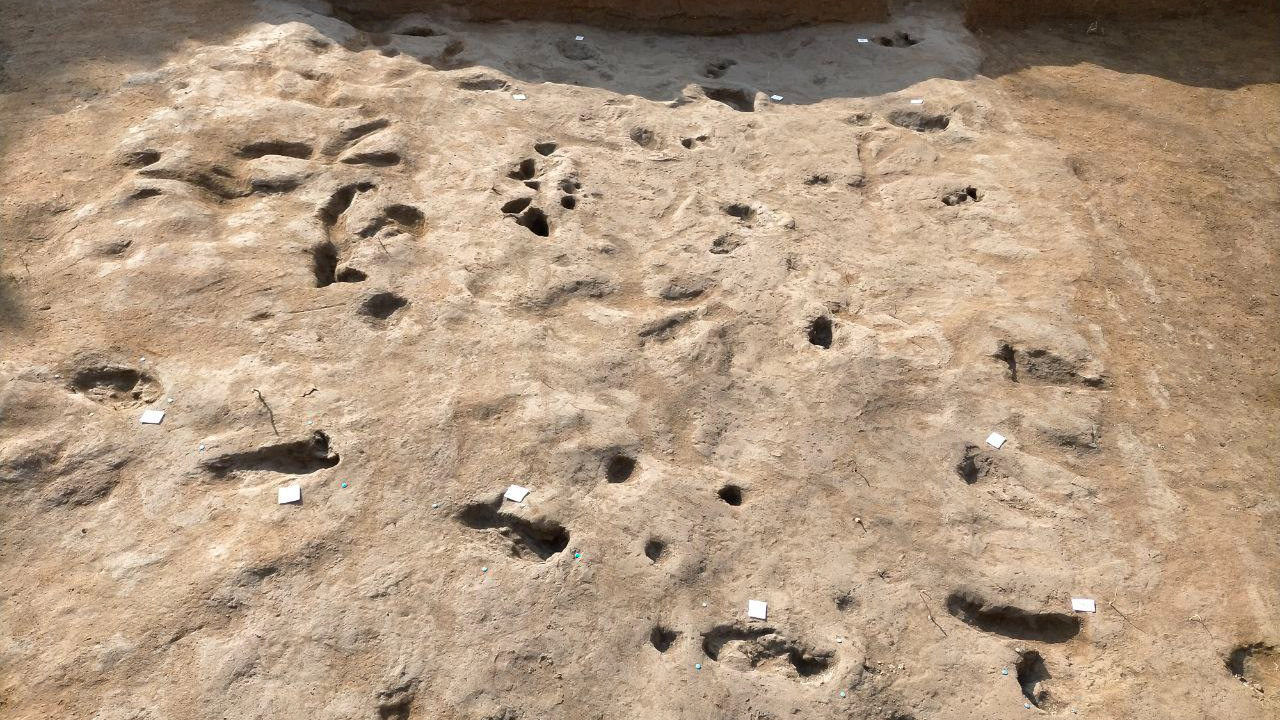
Ancient footprints made by people and animals fleeing the eruption of Mount Vesuvius have been discovered near Pompeii. But these footprints are thousands of years older than the famous eruption in A.D. 79, revealing that people in the Naples area have dealt with volcanic catastrophes for millennia.
The newfound 4,000-year-old prints, as well as other archaeological finds, were uncovered during pipeline construction in an area southeast of Pompeii, according to a translated statement from the Superintendency of Archaeology, Fine Arts and Landscape for the Provinces of Salerno and Avellino.
The footprints were made during the Early Bronze Age in Italy (2300 to 1700 B.C.), according to the statement. The team found the track of human and animal prints in the agricultural area of Casarzano near the city of Nocera Inferiore, about 8 miles (13 kilometers) east of Pompeii.
The footprints were preserved in material ejected from Mount Vesuvius and “offer poignant testimony to the dramatic flight of the inhabitants in the face of the volcano’s fury,” according to the statement.
Around 1995 B.C., Mount Vesuvius erupted, according to previous radiocarbon dating of lake sediments. Called the Avellino pumice eruption, it is estimated to have been larger and more explosive than the one in A.D. 79, devastating the Early Bronze Age farming and herding community living near the volcano and burying settlements under meters of pumice and ash.
Related: Pompeii victims aren’t who we thought they were, DNA analysis reveals
The newly discovered track of human and animal prints in the pyroclastic deposits is not the first known from that eruption, however.
Another track found in 2001 at Nola-Croce del Papa, an Early Bronze Age village that was destroyed by the Avellino eruption, “shows that a sudden, en masse evacuation of thousands of people occurred at the beginning of the eruption,” according to a 2006 study in the journal PNAS. Most of the people who fled Nola-Croce del Papa probably survived, researchers concluded in the study, but their land was likely uninhabitable for centuries.
During the recent pipeline excavations, archaeologists found evidence that people did indeed return to the Casarzano area in later centuries. They uncovered the remains of a village with semicircular huts dated to 1200 to 900 B.C., around the end of the Bronze Age.
“The collection of findings demonstrates the continuous use of the territory over millennia,” the superintendency said in the statement.
